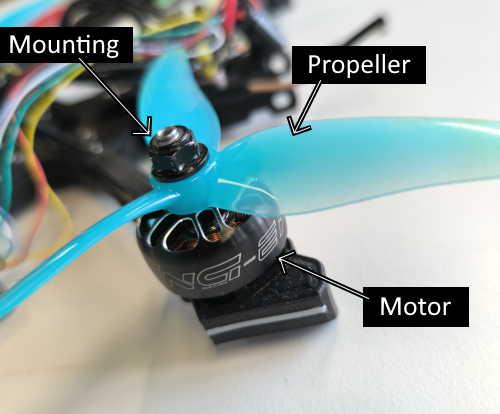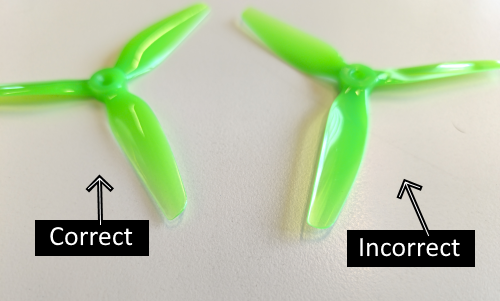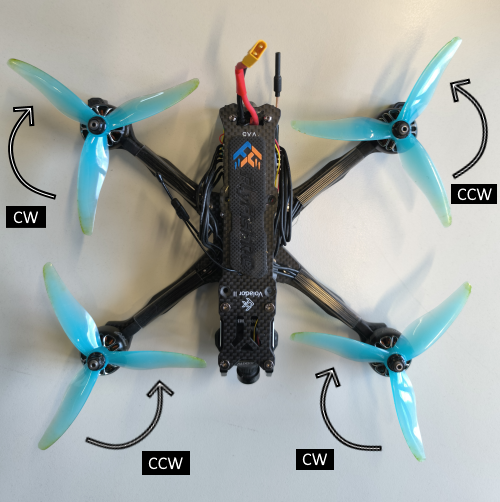Rotors
Rotors are the spinning assemblies on a drone that provide necessary lift, thrust, and control. A standard quadcopter (4-rotor drone) has four rotors, each consisting of:
A motor
A propeller
A mounting hub

The motor spins the propeller at high speeds, pushing air downwards and thereby creating lift through Newton’s Third Law (for every action, there's an equal and opposite reaction).
Propeller Orientation
The direction in which a propeller is mounted and spins determines how efficiently and correctly that lift is generated. Propellers have a specific airfoil shape and pitch, they are twisted to force air downward as they spin. Correct orientation matters - If a blade is mounted with the wrong orientation, even if it's spinning in the correct direction, it may cause several issues:
It won’t generate lift effectively.
It could produce negative thrust or unstable airflow.
The drone may fail to take off or become uncontrollable.
A correct orientation involves:
The leading edge (thicker, more angled part) faces the direction of rotation.
The curved surface of the blade faces up, and the flatter surface faces down.

Propeller Direction
To keep a drone stable and controllable in the air, neighboring pairs of rotors must spin in opposite directions:
Two rotors spin clockwise (CW)
Two spin counterclockwise (CCW)

When a motor spins a rotor, it exerts an opposite torque on the drone’s frame, causing the body of the drone would spin in the opposite direction. Counter-rotating rotors cancel out the rotational torque, keeping the drone stable.
Additionally, having rotors spin in opposite directions allows the drone to yaw(rotate around its vertical axis): For example, in order to yaw right, the drone slows the CW rotors and speeds up the CCW rotors (or vice versa), creating an imbalance in torque.